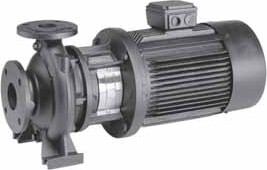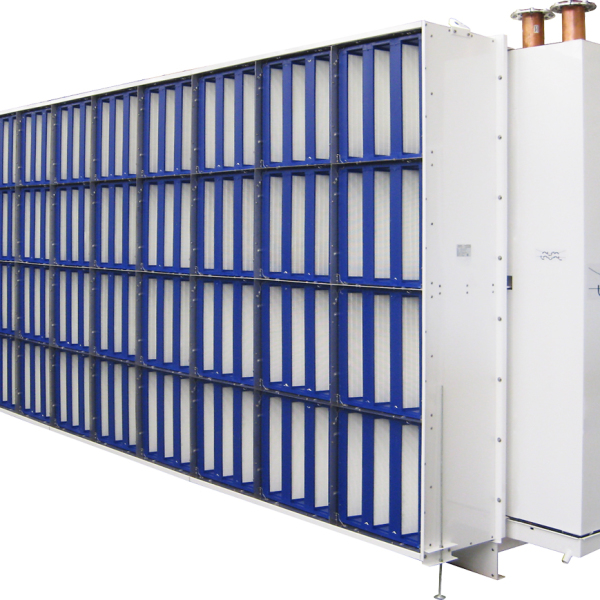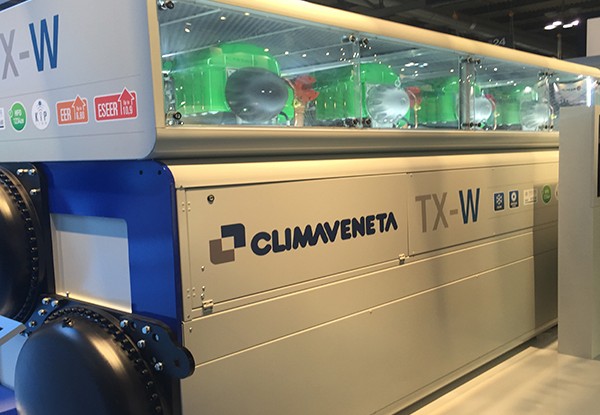Choosing your HVAC pump
WORLD – There are several types of pumps on the market for use in fluid transfer, with the most commonly used pump in today’s HVAC systems being the centrifugal pump. The various different types of centrifugal pumps currently used include volute or axial flow pumps. In a volute pump, the water is taken from the impeller and is later discharged perpendicular to the shaft, while in a centrifugal pump with a diffuser casing (axial flow pump), the water is discharged parallel to the pump shaft.
There are many types of centrifugal pumps currently available, including circulator, single- and multi-stage end-suction, single- and multi-stage split-case, and vertical in-line pumps.
Circulating pumps are generally employed in low pressure, low-capacity systems. The size of this system is, in most cases, under 150 gpm and the pumps are ideal for operating pressures up to 125 psig. In a standard model circulating pump, the pump is mounted directly in and supported by the piping system and the motor can be placed in either the vertical or horizontal position.
The end-suction pumps are single-suction but may however be either close- or flexible-coupled. In a close-coupled pump, the impeller is directly mounted on the motor shaft whereas for a flexible-coupled end-suction pump, the impeller and the motor shaft are separated by a flexible coupling. The principal advantage of using a close-coupled pump is that the alignment of the motor shaft to the impeller is fixed. Conversely, in a flexible-coupled pump, the pump may become misaligned during the maintenance process. This misalignment may cause problems if it is not properly reassembled by trained personnel. The end-suction pumps are designed in such a way that the incoming water enters the pump horizontally through the end. After entering through the end, the water then changes direction and is discharged vertically, perpendicular to the suction. In most situations, these types of pumps are installed on a solid base on the floor. An end-suction pump is suitable for use in HVAC systems with capacities up to 4000 gpm and 150 ft of head.
The most practical advantage in using a close-coupled pump is that the amount of floor space required for installation is drastically reduced. On the other hand, one of the drawbacks of a close-coupled pump in an HVAC system is the motor type, as the motor is generally specially matched to the type of shaft and the seals for the pump. This is not the case for flexible coupled pumps as they typically use standard motors.
Split-case pumps are quite similar to end-suction pumps as they are flexible coupled between the motor and the pump. The difference being that the assembly of the split-case pumps, including the motor and pump, is rigidly mounted on a common base-plate. Pump suction and discharge occur horizontally and are perpendicular to the shaft.
Split-case pumps come in both single- or double-suction versions. To qualify as a single-suction pump, the water must enter the impeller from only one side while, logically, for double-suction pumps, the fluid enters the impeller from both sides. The risk of hydraulic imbalance is diminished in the case of double-suction pumps, this reduction of hydraulic imbalance is one of the factors which contributes to a preference for double-suction split-case pumps over single-suction ones.
Split-case pumps can also have multiple impellers for multi-stage operation and the use of these multiple impellers ensures increased available head within a single pump.
Split-case pumps are widely available in both horizontal and vertical split-case versions. In the case of horizontal split-case pumps, the impeller casing is split in the horizontal plane, while for vertical split-case pumps the impeller casing is split in the vertical plane. Splitting the casing enables full access to the impeller for maintenance purposes.
Split-case pumps are most commonly used in fire protection systems but they may also be used in the HVAC industry for large capacity systems. The capacity range of split-case pumps is up to 6500 gpm and 600 ft of head and certain pumps may be used for increased operating pressures up to 400 psig.
These sorts of pumps normally have a reduced footprint within a plant space and have no need of inertia bases, which are generally installed to dampen vibrations caused by the rotating parts within the pump.
.















